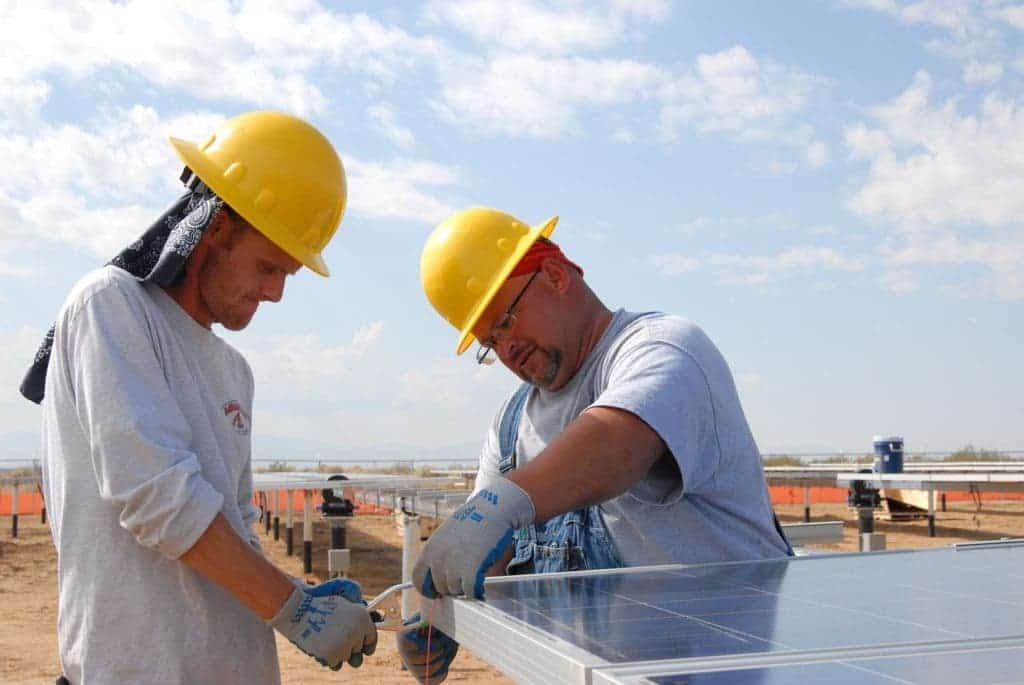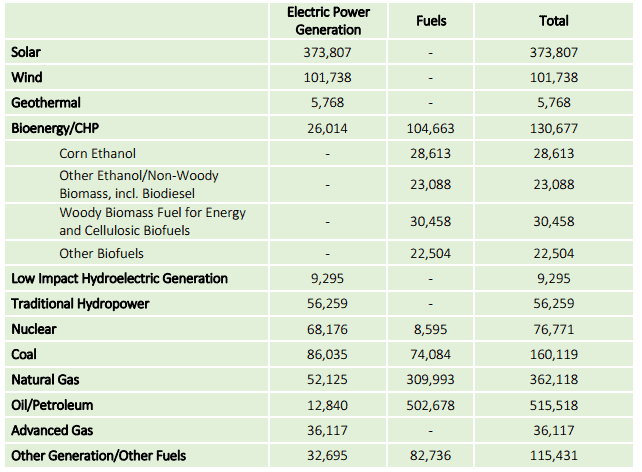
According to the latest figures released by the Department of Energy, solar employed 374,000 people over the year 2015-2016. That’s 43 percent of the Electric Power Generation sector’s workforce, much more than the 187,117 (22 percent) employed by organizations that burn fossil fuels like oil, gas, and coal for electricity.
The US Energy and Employment Report (USEER) from the DOE has more interesting stats to share. Browsing its pages, we learn that since 2015 solar has added 73,000 new jobs, marking a 25 percent growth. Wind power also saw a tremendous growth of 32 percent and now employs 100,000 people, making it the third largest workforce in electrical power generation.
We had the first hints that solar would surpass fossil fuels in terms of electricity generation jobs since 2014 when we reported solar added jobs 20 times faster than the U.S. average. The big gulf in the workforce between solar and fossil fuels can be attributed to construction work associated with expanding renewable energy generation capacity. Meanwhile, coal is tanking with many companies going bankrupt and thousands losing their jobs.
Net generation from coal sources declined by 53 percent between 2006 and September 2016, while electricity generation from natural gas increased by 33 percent and solar by over 5,000 percent—from 508,000 MWh to just over 28,000,000 MWh. On a global level, in 2016 renewable energy capacity officially overtook coal.

According to the same report, Electric Power Generation and Fuels directly employed 1.9 million people, 1.1 million of whom work in oil, gas, and coal, while almost 800,000 workers were employed in low carbon emission generation technologies, including renewables, nuclear, and advanced/low emission natural gas.
The Transmission, Distribution, and Storage sector employs 2.3 million people, a sector which added 65,000 new jobs during 2015-2016. Energy Efficiency products and services employ 2.2 million Americans, 133,000 more than in 2016. Finally, the Motor Vehicles and Component Parts industry employs just over 2.4 million workers, among which 260,000 jobs were in alternative fuel vehicles (natural gas, hybrids, plug-in hybrids, all electric, and fuel cell/hydrogen), an increase of 69,000 jobs in the last year.
Bearing these numbers in mind, it’s clear that green tech helps the economy by fostering jobs, not destroying them as one famous politician claims.
“This report verifies the dynamic role that our energy technologies and infrastructure play in a 21st-century economy,” DOE Senior Advisor on Industrial and Economic Policy David Foster said in a statement. “Whether producing natural gas or solar power at increasingly lower prices or reducing our consumption of energy through smart grids and fuel efficient vehicles, energy innovation is proving itself as the important driver of economic growth in America.”


